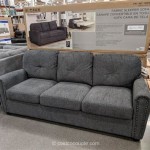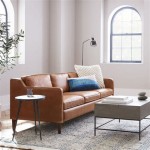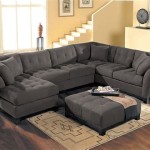Can a Console Table Be Higher Than a Sofa? Exploring Design Principles and Practical Considerations
The placement of furniture involves navigating a complex interplay of aesthetics, functionality, and spatial awareness. One common question that arises in interior design relates to the relative heights of a console table and a sofa. Specifically, can a console table be higher than a sofa, and under what circumstances is this arrangement appropriate or even advantageous? This article will explore the various factors that influence the ideal relationship between the heights of these two furniture pieces, considering visual harmony, practicality, and specific design styles.
The traditional approach to console table placement often involves positioning it against a wall, either in a hallway, entryway, or behind a sofa. When placed behind a sofa, the general guideline typically suggests that the console table should be at or slightly below the height of the sofa's back. This approach ensures that the console table does not visually overwhelm the sofa and maintains a sense of balance in the room. However, deviating from this norm can be a deliberate design choice, contingent on several factors, including the style of the sofa, the purpose of the console table, and the overall design aesthetic.
Understanding Visual Harmony and Proportion
The principles of visual harmony and proportion are fundamental to interior design. They dictate how different elements within a space relate to each other in terms of size, scale, and form. When considering whether a console table can be higher than a sofa, it is crucial to analyze how this height difference will impact the overall visual balance of the room.
A console table significantly taller than the sofa can create a dramatic effect, potentially drawing the eye upward and adding a sense of verticality to the space. This can be particularly effective in rooms with low ceilings, where accentuating vertical lines can help to create the illusion of greater height. However, such an arrangement must be carefully considered to avoid appearing awkward or disproportionate. The design of the console table and the sofa must complement each other. For instance, a sleek, minimalist sofa paired with a tall, sculptural console table can create an interesting and visually appealing contrast.
Conversely, if the height difference is too extreme, it can result in an unbalanced or top-heavy appearance. This is especially true if the sofa is low-profile and the console table is bulky or ornate. In such cases, the console table may appear to dominate the space, overshadowing the sofa and creating a sense of visual discord. The surrounding decor also plays a crucial role. A gallery wall above the sofa and console table might help to visually tie the two pieces together, mitigating the impact of the height difference.
Therefore, while a console table can technically be higher than a sofa, the success of this arrangement hinges on careful consideration of proportion and visual balance. It is essential to assess the specific characteristics of the furniture pieces involved, as well as the overall design context of the room.
Functional Considerations: Access and Utility
Beyond aesthetics, the height relationship between a console table and a sofa is also influenced by functional considerations. The primary purpose of the console table, and how it will be used, directly affects the ideal height.
If the console table is intended to serve as a surface for placing drinks, lamps, or other frequently used items, its height should be comfortable and accessible for those seated on the sofa. A console table that is significantly higher than the sofa's back may make it difficult for individuals to reach items placed on its surface, rendering it less practical. In such cases, a lower console table, closer in height to the sofa, would be more appropriate.
On the other hand, if the console table is primarily intended for decorative purposes, or to provide a backdrop for displaying artwork or accessories, its height may be less critical from a functional perspective. A taller console table can create a striking visual display, drawing attention to the items placed on it. This approach can be particularly effective for showcasing statement pieces or creating a focal point in the room.
Moreover, the arrangement of the console table and sofa can impact the flow of traffic within the room. A taller console table extending significantly beyond the back of the sofa may obstruct pathways or create a feeling of confinement. In such situations, it is essential to ensure that there is ample space for movement and that the furniture arrangement does not impede the overall functionality of the room. The depth of the console table is also a factor; a shallow console table will be less obtrusive than a deep one, even if it is relatively tall.
Thus, the ideal height of a console table relative to a sofa is dependent on the intended function of the console table and its impact on the practicality and flow of the space. Accessibility, usability, and spatial considerations should all be carefully evaluated.
Design Style and Aesthetic Intentions
The prevailing design style of a room heavily influences the appropriateness of a console table being higher than a sofa. Different design styles embrace different principles of scale, proportion, and visual hierarchy.
In contemporary and modern interiors, a taller console table can be a deliberate design choice, reflecting the emphasis on clean lines, geometric forms, and minimalist aesthetics. These styles often incorporate unexpected juxtapositions and deviations from traditional norms. A tall, sleek console table can create a visually striking contrast against a low-profile sofa, contributing to the overall sense of modern sophistication. Exposed legs on both the sofa and the console can enhance the feeling of lightness and airiness, mitigating the impact of the height difference.
Conversely, in more traditional or formal settings, a console table that is significantly higher than the sofa may appear out of place. Traditional design styles tend to emphasize symmetry, balance, and conformity to established conventions. A lower console table, aligned with the height of the sofa's back, is more likely to complement the overall aesthetic in such spaces. However, even in traditional settings, there can be exceptions, particularly if the console table is an antique or a statement piece with historical significance.
In eclectic or bohemian interiors, there is greater flexibility to experiment with different heights and proportions. These styles embrace a more relaxed and unconventional approach to design, allowing for the integration of diverse elements and unexpected pairings. A taller console table, adorned with a variety of decorative objects and personal mementos, can add visual interest and personality to an eclectic space.
Ultimately, the decision of whether a console table can be higher than a sofa should be informed by the prevailing design style and the desired aesthetic effect. Understanding the underlying principles of each style allows for informed choices that contribute to a cohesive and visually appealing interior.
Furthermore, consider the materials used in both the sofa and the console table. A heavy, dark wood console table might feel overwhelming if it's taller than a light-colored, fabric-covered sofa. Conversely, a glass-topped console table, even if tall, will visually recede and feel less imposing. The texture also matters; a highly textured console table will draw more attention than a smooth one.
Lighting plays a critical role in how the height difference is perceived. If the area behind the sofa and console table is well-lit, a taller console table will cast shadows that can accentuate its height. Conversely, dim lighting can minimize the impact of the height difference. The placement of lamps on the console table itself can also influence the overall visual balance. Tall lamps can further emphasize the height of the console, while shorter lamps can help to ground it.
Finally, consider the architectural context of the room. High ceilings can accommodate a taller console table more easily than low ceilings. In a room with architectural details such as crown molding or wainscoting, the height of the console table should be considered in relation to these features. A console table that aligns with the height of the wainscoting, for example, can create a sense of visual harmony.
In conclusion, determining whether a console table can be higher than a sofa necessitates a holistic assessment of multiple factors. These include visual harmony and proportion, functional considerations related to access and utility, and the impact of design style and aesthetic intentions. By carefully evaluating these elements, it is possible to create a furniture arrangement that is both visually appealing and functionally sound.

16 Long Sofa Tables To Go Behind The Couch Chrissy Marie Blog

16 Long Sofa Tables To Go Behind The Couch Chrissy Marie Blog

What Is The Difference Between A Console Table And Side Living Spaces

How To Style A Console Table Behind Couch 4 Ways

How To Choose The Right Console Table Plank And Pillow

X Doesn T Mark The Spot Bower Power

30 Diy Sofa Console Table Tutorial Jenna Sue Design

Sofa Table Vs Console
:max_bytes(150000):strip_icc()/il_fullxfull.2223641074_gh2q_5000x-c5d0dba46970415db315eb0675b8c989.jpg?strip=all)
24 Sofa Table Ideas To Optimize Your Living Room

What Is The Difference Between A Console Table And Side Living Spaces








